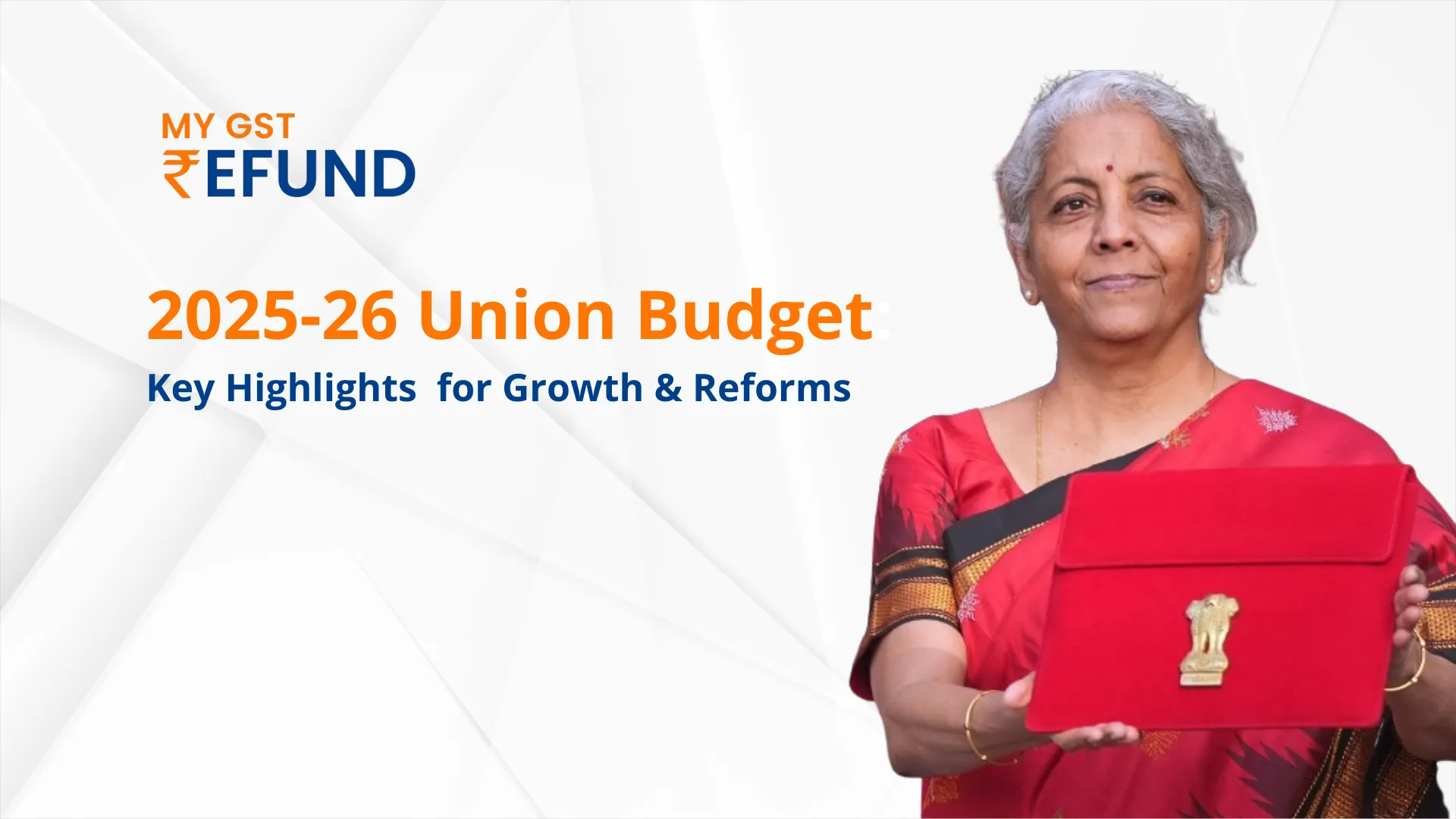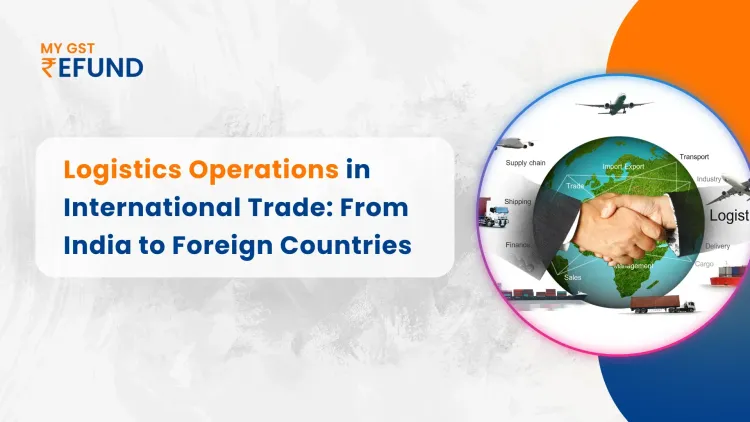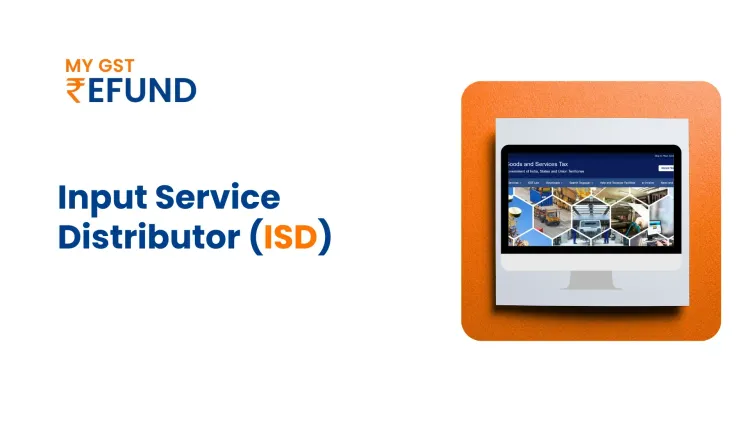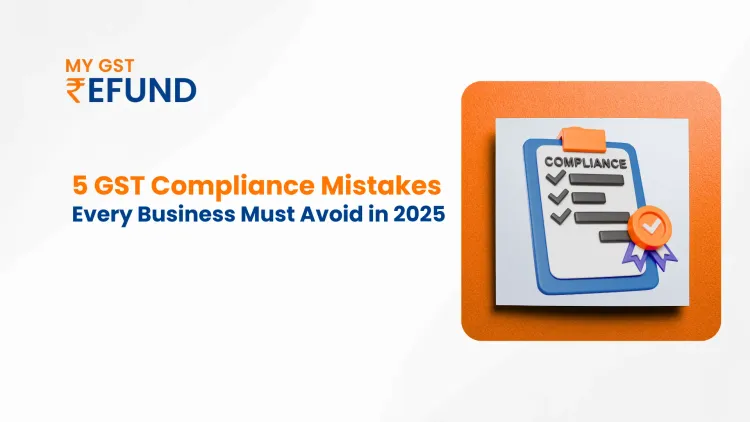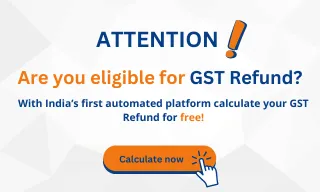2025-26 Union Budget: Key Highlights for Growth & Reforms
Finance Minister Nirmala Sitharaman unveiled a complete economic development plan through the 2025-26 Union Budget on February 1, 2025. The budget aims to intensify economic acceleration while promoting societal growth alongside the expansion of private sector investments and improvements in household feelings and economic capabilities of India's expanding middle household segment.
The budget further develops initiatives that began in the previous two government terms with Prime Minister Narendra Modi's leadership to establish Viksit Bharat (Prosperous India). The budget implements agriculture alongside MSMEs and investments together with exports as core drivers of growth through the combination of reforms of all sectors while prioritizing inclusion and balanced development
throughout the nation.
Agriculture and Rural Development
1. Prime Minister Dhan-Dhaanya Krishi Yojana : Aims to cover 100 districts to enhance agricultural productivity, benefitting ₹ 1.7 crore farmers.
2. Rural Prosperity and Resilience Programme : Focuses on rural women, young farmers, rural youth, marginal and small farmers, and landless families.
3. Makhana Board in Bihar : To improve production, processing, value addition, and marketing of makhana.
4. National Mission on High Yielding Seeds : Targets commercial availability of more than 100 seed varieties released since July 2024.
5. Mission for Cotton Productivity : A 5-year mission to improve cotton productivity and sustainability.
6. Enhanced Credit through KCC : Loan limit under the Modified Interest Subvention Scheme enhanced from ₹ 3 lakh to ₹5 lakh for loans through Kisan Credit Cards.
7. Urea Plant in Assam : A plant with an annual capacity of ₹12.7 lakh metric tons to be set up at Namrup, Assam.
8. India Post as a Catalyst for the Rural Economy : Repositioning India Post to act as a catalyst for the rural economy, with expanded services including rural community hub colocation, institutional account services, DBT, cash out and EMI pick-up, credit services to micro enterprises, insurance, and assisted digital services.
MSMEs and Manufacturing
9. Revision in MSME Classification Criteria : Investment and turnover limits for all MSMEs will be enhanced to 2.5 and 2 times respectively.
10. Significant Enhancement of Credit Availability : Credit guarantee cover enhanced for Micro and Small Enterprises from 5 crore to 10 crore, leading to additional credit of 1.5 lakh crore in the next 5 years.
11. Credit Cards for Micro Enterprises : Customized credit cards with a 5 lakh limit for micro enterprises registered on the Udyam portal, with 10 lakh such cards to be issued in the first year.
12. Fund of Funds for Startups : A new Fund of Funds with a fresh contribution of 10,000 crore to be set up.
13. Scheme for First-time Entrepreneurs : A new scheme for 5 lakh women, Scheduled Castes, and Scheduled Tribes first-time entrepreneurs, providing term loans up to 2 crore during the next 5 years.
14. Measures for Labour-Intensive Sectors : Policy and facilitation measures to promote employment and entrepreneurship opportunities in labour-intensive sectors.
15. Focus Product Scheme for Footwear & Leather Sectors : To enhance productivity, quality, and competitiveness of India’s footwear and leather sector, expected to facilitate employment for 22 lakh persons, generate turnover of 4 lakh crore and exports of over 1.1 lakh crore.
16. Measures for the Toy Sector : Implementation of a scheme to make India a global hub for toys, focusing on development of clusters, skills, and a manufacturing ecosystem.
17. Support for Food Processing : Establishment of a National Institute of Food Technology, Entrepreneurship and Management in Bihar to boost food processing activities in the Eastern region.
18. Manufacturing Mission - Furthering “Make in India” : A National
Manufacturing Mission to be set up to further “Make in India” by providing policy support, execution roadmaps, governance, and monitoring framework for central ministries and states.
19. Clean Tech Manufacturing : Support for Clean Tech manufacturing to improve domestic value addition and build the ecosystem for solar PV cells, EV batteries, motors and controllers, electrolyzers, wind turbines, very high voltage transmission equipment, and grid-scale batteries.
Investment and Economy
20. Investing in People : Initiatives such as Saksham Anganwadi and Poshan 2.0, Atal Tinkering Labs, broadband connectivity to Government secondary schools and PHCs, Bharatiya Bhasha Pustak Scheme, and National Centres of Excellence for Skilling.
21. Expansion of Capacity in IITs : Additional infrastructure in 5 IITs started after 2014 to facilitate education for 6,500 more students, and expansion of hostel and other infrastructure capacity at IIT, Patna.
22. Centre of Excellence in AI for Education : A Centre of Excellence in Artificial Intelligence for education to be set up with a total outlay of ` 500 crore.
23. Expansion of Medical Education : Addition of 10,000 medical education seats in the next year, towards the goal of adding 75,000 seats in the next 5 years.
24. Day Care Cancer Centres : Facilitation of setting up Day Care Cancer Centres in all district hospitals in the next 3 years, with 200 Centres to be established in 2025-26.
25. Strengthening Urban Livelihoods : Implementation of a scheme for socio-economic upliftment of urban workers to help them improve their incomes, have sustainable livelihoods, and a better quality of life.
26. PM SVANidhi : Revamping the PM SVANidhi scheme with enhanced loans from banks, UPI-linked credit cards with ₹30,000 limit, and capacity-building support.
27. Social Security Scheme for Welfare of Online Platform Workers : Providing identity cards and registration on the e-Shram portal for gig workers of online platforms, and healthcare under PM Jan Arogya Yojana.
28. Investing in the Economy : Initiatives such as Public Private Partnership in Infrastructure, Support to States for Infrastructure, Asset Monetization Plan 2025-30, Jal Jeevan Mission, Urban Sector Reforms, Urban Challenge Fund, Power Sector Reforms, Nuclear Energy Mission for Viksit Bharat, Shipbuilding, Maritime Development Fund, UDAN - Regional Connectivity Scheme, Greenfield Airport in Bihar, Western Koshi Canal Project in Mithilanchal, Mining Sector Reforms, SWAMIH Fund 2, PM Gati Shakti Data for Private Sector, Tourism for
employment-led growth, Medical Tourism and Heal in India.
29. Investing in Innovation : Allocation of ₹20,000 crore for private sector-driven Research, Development and Innovation initiative, exploration of a Deep Tech Fund of Funds, PM Research Fellowship, Gene Bank for Crops Germplasm, National Geospatial Mission, and Gyan Bharatam Mission.
Exports and Trade
30. Export Promotion Mission : To be set up with sectoral and ministerial targets, facilitating easy access to export credit, cross-border factoring support, and support to MSMEs to tackle non-tariff measures in overseas markets.
31. Bharat TradeNet : A digital public infrastructure for international trade as a unified platform for trade documentation and financing solutions.
32. Support for Integration with Global Supply Chains : Identification of sectors based on objective criteria for developing domestic manufacturing capacities.
33. National Framework for GCC : To be formulated as guidance to states for promoting Global Capability Centres in emerging tier 2 cities.
34. Warehousing Facility for Air Cargo : Facilitation of infrastructure and warehousing for air cargo, including high-value perishable horticulture produce.
Reforms and Fiscal Policy
35. Tax Reforms : Introduction of the new income-tax bill with a simpler and clearer structure, reducing litigation and providing tax certainty.
36. Financial Sector Reforms and Development : Increase in FDI limit for the insurance sector from 74 to 100 per cent, expansion of services of India Post Payment Bank, credit enhancement facility by NaBFID, development of ‘Grameen Credit Score’ framework, establishment of a forum for regulatory coordination and development of pension products, simplification of KYC process, rationalization of requirements and procedures for company mergers, revamping of Bilateral Investment Treaties.
37. Regulatory Reforms : Establishment of a High-Level Committee for Regulatory Reforms, launch of an Investment Friendliness Index of States, setting up of a mechanism under the Financial Stability and Development Council, and introduction of the Jan Vishwas Bill 2.0.
38. Fiscal Consolidation : Commitment to staying the course for fiscal
consolidation, with a roadmap for the next 6 years detailed in the FRBM statement.
39. Revised Estimates 2024-25 : Total receipts other than borrowings 31.47 lakh crore, total expenditure 47.16 lakh crore, fiscal deficit 4.8% of GDP.
40. Budget Estimates 2025-26 : Total receipts other than borrowings 34.96 lakh crore, total expenditure ₹50.65 lakh crore, fiscal deficit 4.4% of GDP.
41. Net Market Borrowings : Estimated at 11.54 lakh crore from dated securities, gross market borrowings 14.82 lakh crore.
Direct Taxes
42. Personal Income-tax Reforms : No income tax payable up to income of 12lakh under the new regime, with revised tax slabs and rates.
₹0 - ₹4,00,000 Nil
₹4,00,001 - ₹8,00,000 5%
₹8,00,001 - ₹12,00,000 10%
₹12,00,001 - ₹16,00,000 15%
₹16,00,001 - ₹20,00,000 20%
₹20,00,001 - ₹24,00,000 25%
Above ₹24,00,000 30%
Tax Rebate Information:
● No tax for income up to₹12,00,000.
● For salaried individuals (with standard deduction), no tax is
applicable for income up to₹12,75,000.
43. Rationalization of TDS/TCS : Reduction in TDS rates and thresholds, benefiting small taxpayers.
44. Encouraging Voluntary Compliance : Extension of the time limit to file updated returns from 2 years to 4 years.
45. Reducing Compliance Burden : Increase in the period of registration for small charitable trusts/institutions from 5 years to 10 years.
46. Ease of Doing Business : Introduction of a scheme for determining arm's length price of international transactions for a block period of three years.
Indirect Taxes
47. Rationalisation of Customs Tariff Structure : Removal of seven tariff rates, leaving only eight remaining tariff rates including ‘zero’ rate.
48. Relief on Import of Drugs/Medicines : Addition of 36 lifesaving drugs and medicines to the list of medicines fully exempted from Basic Customs Duty (BCD).
49. Support to Domestic Manufacturing : Full exemption of BCD on 25 critical minerals not domestically available, and reduced BCD on 2 other such minerals.
50. Textiles : Addition of two more types of shuttle-less looms to the list of fully exempted textile machinery.
51. Electronic Goods : Increase in BCD on Interactive Flat Panel Display (IFPD) from 10% to 20% and reduction in BCD on Open Cell and other components.
52. Lithium Ion Battery : Addition of 35 capital goods for EV battery manufacturing and 28 for mobile phone battery manufacturing to the exempted list.
53. Shipping Sector : Continuation of the exemption of BCD on raw materials, components, consumables, or parts for the manufacture of ships for another ten years.
54. Telecommunication : Reduction of BCD from 20% to 10% on Carrier Grade ethernet switches.
55. Export Promotion : Extension of the time period for export of handicrafts from six months to one year, further extendable by another three months, and addition of nine items to the list of duty-free inputs.
56. Leather Sector : Full exemption of BCD on Wet Blue leather to facilitate imports for domestic value addition and employment, and exemption of crust leather from 20% export duty to facilitate exports by small tanners.
57. Marine Products : Reduction of BCD from 30% to 5% on Frozen Fish Paste (Surimi) for manufacture and export of its analogue products, and reduction of BCD from 15% to 5% on fish hydrolysate for manufacture of fish and shrimp feeds.
58. Domestic MROs for Railway Goods : Extension of the dispensation for domestic MROs for railway goods, allowing imported foreign origin goods to be exported after repairs within one year, further extendable by one year.
59. Trade Facilitation : Introduction of a time limit of two years for finalizing provisional assessments, with an extension of one year if sufficient cause is shown, and a new provision for voluntary revision of entry after clearance of goods.
60. Amendments in GST Laws : Amendments in sections 2, 12, 13, 17, 20, 34, 38, 39, 107, 112, and 122B of the CGST Act, 2017, and Schedule III of the CGST Act, 2017.
Other Key Initiatives
61. Jal Jeevan Mission : Extension until 2028 with an enhanced total outlay, aiming for 100% coverage of potable tap water connections.
62. Urban Challenge Fund : A fund of ` 1 lakh crore to implement proposals for ‘Cities as Growth Hubs’, ‘Creative Redevelopment of Cities’, and ‘Water and Sanitation’.
63. Power Sector Reforms : Incentivization of electricity distribution reforms and augmentation of intra-state transmission capacity by states.
64. Nuclear Energy Mission : Development of at least 100 GW of nuclear energy by 2047, with a mission for research and development of Small Modular Reactors (SMR) with an outlay of ` 20,000 crore.
65. Shipbuilding : Revamped Shipbuilding Financial Assistance Policy, inclusion of large ships in the infrastructure harmonized master list, and facilitation of shipbuilding clusters.
66. Maritime Development Fund : A fund with a corpus of 25,000 crore for long-term financing for the maritime industry.
67. UDAN - Regional Connectivity Scheme : A modified scheme to enhance regional connectivity to 120 new destinations and carry 4 crore passengers in the next 10 years.
68. Greenfield Airport in Bihar : Facilitation of greenfield airports in Bihar to meet future needs, in addition to the expansion of Patna airport and a brownfield airport at Bihta.
69. Mining Sector Reforms : Encouragement of mining sector reforms through sharing best practices and institution of a State Mining Index.
70. SWAMIH Fund 2 : Establishment of a blended finance facility with a contribution from the Government, banks, and private investors, aiming to complete another 1 lakh dwelling units.
71. Tourism for Employment-led Growth : Development of the top 50 tourist destination sites in partnership with states, with measures such as intensive skill-development programmes for youth, MUDRA loans for homestays, improvement of travel and connectivity to tourist destinations, performance-linked incentives to states, and streamlined e-visa facilities.
72. Medical Tourism and Heal in India : Promotion of medical tourism and Heal in India in partnership with the private sector, along with capacity building and easier visa norms.
73. Research, Development and Innovation : Allocation of ₹20,000 crore for private sector-driven Research, Development and Innovation initiative,exploration of a Deep Tech Fund of Funds, PM Research Fellowship, Gene Bank for Crops Germplasm, National Geospatial Mission, and Gyan Bharatam Mission.
The Indian economy will follow specific direction over the next years according to this budget which focuses on both inclusive growth and rural development plus business convenience enhancement aspects.The proposed economic measures serve to increase agricultural productivity and assist MSMEs and enhance investment flows as well as export capabilities while upholding social welfare programs and sustainable development
Objectives.
Through financial consolidation efforts and regulatory changes and technological advancements the government has created conditions for India to become more prosperous while becoming more competitive at the global level. The budget foundation works toward immediate economic resolution and it builds momentum for future growth as well as distribution of development advantages to every societal segment.
Related Posts




